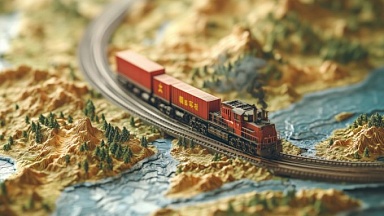TRIESTE — A new railway route has opened this week along the Silk Road between Europe and China.
On July 7, the first freight train between the Duisburg Gateway Terminal and the city of Chengdu, capital of Sichuan Province in southwestern China, was launched.
The new connection to the fourth most populous metropolis in the People’s Republic, presented in the presence of delegations from both countries, was made operational by RTSB, the group that just seven months ago reached the milestone of its 100,000th train between China and the DGT.
The transported goods include «electronics, German cars, European delicacies such as cookies, beer and wine, as well as pharmaceuticals and powdered milk,» according to a post by duisport on LinkedIn. There will be no stops at the borders: the service, designed to ensure consistent transit times and reliable scheduling, benefits from customs management coordinated directly by the terminal, allowing for uninterrupted cross-border transport.
«This train is more than just a means of transport: it is a symbol of reliability, partnership, and vision in international logistics, and it strengthens the future-oriented cooperation between Europe and Asia,» commented Markus Bangen, CEO of duisport.
The initiative follows the recent signing of a Memorandum of Understanding with the port of Xi’an and DB Cargo Eurasia, which in turn came after the first train to Xi’an departed in January.
In addition to being the world’s largest inland port, Duisburg is known for its strong connections throughout Europe. The news is also particularly relevant to Interporto Trieste, in which duisport holds a 15% stake and with which it has moved over 400 trains since the beginning of the year.
Meanwhile, the Duisburg Gateway Terminal is focused on developing the enerPort II project—an upgrade involving solar panels, fuel cells, combined heat and power units, battery storage systems, and smart control technologies.
Hydrogen systems are also a key part of the plan and are already in operation, according to the Senior Vice President of Rolls Royce Power Systems AG. The company, which helped implement them, wants to «prove that hydrogen works both in theory and in practice» and to «build confidence in this technology.»
The goal is to achieve an almost entirely climate-neutral impact at the port—and eventually, to power ships using shore-side electric connections.


